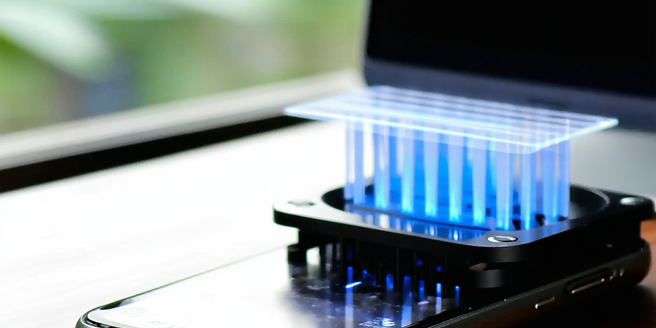Assessment Of Smartphone Vapor Cooling Technologies

Overview of Smartphone Cooling Needs
Modern smartphones, with their powerful processors and high-resolution displays, generate considerable heat during operation. Efficient cooling solutions are essential to maintain performance standards, prevent overheating, and ensure user safety. As these devices become integral tools for various tasks, from gaming to video editing, their thermal management strategies must evolve accordingly. Conventional cooling methods such as passive heat dissipation have proven insufficient in meeting the thermal demands of contemporary smartphones. Hence, the development and incorporation of advanced cooling technologies have become imperative. The urgency to balance performance with thermal efficiency is driving innovation in smartphone design, particularly in the cooling architecture. Understanding and addressing these cooling needs is crucial in the broader context of smartphone design, influencing factors such as battery performance, user comfort, and device longevity.
Introduction to Vapor Cooling Technology
Vapor cooling technology represents a significant advancement in the quest for efficient heat management in smartphones. Utilizing the principles of phase change, this system effectively transports heat away from the processor and other high-temperature components. The core mechanism involves a vacuum-sealed chamber containing a small amount of fluid. When the device’s temperature rises, the fluid evaporates, absorbing heat in the process. The generated vapor then moves to cooler areas of the chamber, where it condenses back into liquid, releasing the absorbed heat. This continuous cycle allows for efficient temperature regulation. As smartphones demand more in terms of performance, incorporating vapor cooling systems becomes increasingly critical. This technology not only enhances performance but also extends the hardware’s lifespan by mitigating thermal wear and tear, making it an attractive approach in modern smartphone design.
Comparing Vapor Chamber and Heat Pipes
Vapor chambers and heat pipes are two prominent technologies employed to manage smartphone heat dissipation effectively. Both methods use phase change principles, but they differ in construction and application. Vapor chambers, being two-dimensional, provide uniform heat spreading, making them suitable for devices with confined spaces and higher heat concentrations. On the other hand, heat pipes are cylindrical and can be more flexible in installation, often used to transport heat over longer distances within the device. The choice between them hinges on the specific design goals and constraints of a smartphone. While vapor chambers offer better heat distribution, heat pipes can adapt to various form factors. A blend of both technologies is sometimes used to maximize cooling efficiency, highlighting the importance of selecting the appropriate thermal management solution tailored to a device’s design and usage specifications.
Performance Metrics in Cooling Efficiency
Evaluating the performance of smartphone cooling systems relies on several essential metrics. Key among them is the thermal conductivity of the cooling materials, which directly influences how effectively heat is transferred away from the processor and dissipated. Another crucial factor is the thermal resistance, which measures the impediment to heat flow; lower resistance indicates more efficient heat transfer. Additionally, the system’s ability to maintain stable operating temperatures during peak performance periods is vital, as it correlates with maintaining device performance and safety. The response time of the cooling system to thermal changes is also assessed to ensure rapid adjustment to fluctuating workloads. By analyzing these metrics, manufacturers can optimize cooling technologies to strike a balance between performance, energy efficiency, and device longevity, all while safeguarding the user experience.
Impact on Smartphone Design and Weight
Integrating advanced cooling systems, such as vapor chambers, into smartphones significantly impacts design considerations, including weight distribution and component layout. One primary challenge is minimizing the added bulk and weight that cooling solutions can introduce, as consumers consistently demand sleek, lightweight devices. Innovative materials and compact designs play crucial roles in addressing these constraints without sacrificing cooling efficiency. Furthermore, the placement of cooling components can influence the internal architecture, dictating the arrangement of processors, batteries, and other critical parts. Successfully integrating these cooling technologies requires a nuanced understanding of the interplay between thermal management and overall device aesthetics. Striking this balance enables manufacturers to deliver high-performance smartphones that remain attractive and ergonomic, maintaining competitiveness in an ever-evolving marketplace where both function and form are paramount.
Future Trends in Cooling Technology Innovations
The future of smartphone cooling technologies is poised for remarkable innovation, driven by the dual demands for higher performance and greater efficiency. Emerging trends focus on leveraging materials with superior thermal conductivity, such as graphene, to enhance heat dissipation while reducing weight. Additionally, the integration of artificial intelligence in thermal management systems offers the potential for dynamic and predictive cooling, adjusting in real-time to user behavior and environmental conditions. Flexible and stretchable cooling materials are also gaining attention, promising to reshape component placement and overall device design. As smartphone capabilities continue to expand, the need for innovative cooling solutions becomes even more critical, aiming to ensure that advancements in processing power and battery life are not hindered by thermal limitations. These trends underscore a future where smartphone cooling is both a scientific and engineering frontier.